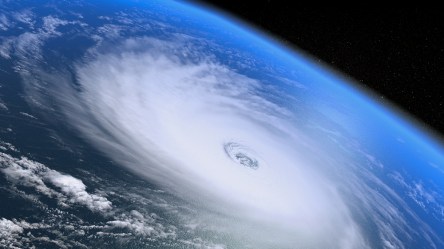With hurricane season in full swing on both coasts, we can all benefit from a refresher on hurricane preparedness for properties and residents. According to the National Weather Service, last year was relatively calm for hurricanes and tropical storms with property damages totaling just over $10 million. That’s a significant amount yet pales in comparison to $172 million in damages in 2012 and billions in recovery costs. Even the most basic planning can prevent costly property damage as well as injury and loss of life. Community safety tips Make sure that employees and residents are familiar with building-specific and community evacuation routes. It’s difficult to host community drills, so a push notification delivered via smartphone, article in the monthly newsletter, or social media post may draw the most attention. In high rise buildings, it is conventional knowledge to evacuate residents to lower floors, where wind conditions are more favorable. But be mindful of flood levels, informing residents to congregate on the appropriate floor that is above threat of water damage and below the worst wind. Interior rooms with fewer windows are favorable to exterior rooms. Keep shrubs and hedges trimmed. Top-heavy plants have a parachute effect in high winds. Keeping them trimmed low can minimize their ability to take flight. Call professional arborists to remove damaged or decaying limbs from trees even if they are not directly over buildings. Branches and limbs are projectiles during hurricanes, increasing the likelihood of injuries and damages. Close the pool and bring in any accessories and patio furniture that are not bolted down. In addition to regular wear and tear during storms, these items may become dangerous projectiles. Ensure that gutters and clean and repaired, especially as fall leaves become more plentiful. A simple clog can exacerbate flooding....
Risky Weather
Wind-Driven Property Damage
The growing incidence of extreme weather poses a range of risks for commercial and residential properties—and one of the most underestimated is wind. Particularly with so much property being built along the coasts, dollar losses to wind are increasing at a rapid rate, catching up to the historically predominant risk for fire. Indeed, according to risk-assessment service provider Verisk Insurance Solutions, 18 of the top 20 catastrophes to impact the United States since 1950, based on total cost, have involved wind damage (all but the terrorist attacks on Sept. 11, 2001, and the Northridge earthquake)—and most of them took place within the past few years. That does not even take into account Hurricane Sandy, whose damage costs are still being evaluated. The increased risk is due to a combination of intensified weather patterns in recent years and the growth in construction in wind-prone areas that historically had a much thinner proliferation of commercial properties—according to Verisk, almost 40 percent of insured value nationwide today is in coastal counties, with that number at almost 60 percent for New York State and 80 percent for Florida. Given the extensive list of possible losses from wind, property owners and managers would do well to take some precautions. After all, any breach in the building envelope can result in damage to the property itself or its contents—whether it be as extreme as the lifting of the roof in a tornado or a broken window or door that permits entrance of water. And loss doesn’t stop with damage to the building and its contents; debris removal adds to the expense, and the material may not even be from your own building. The exit of harmful chemicals from an industrial site can cause environmental damage. And both business interruption and...


